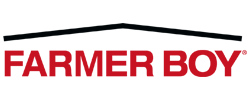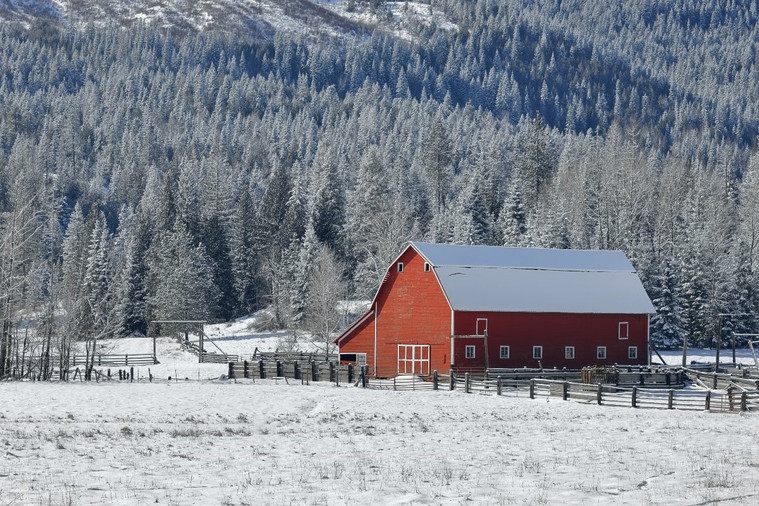Preparing Your Barn For Winter: 7 Tips To Winterize Your Barn
Oct 6, 2021
Whether you only have a few head of livestock or operate a large commercial farm, preparing your livestock barn for the winter season is vital. Being proactive and winterizing your barn will allow you to keep your animals safe during the colder months.
Here are seven important tips to help you best prepare your barn for the colder winter months.
Inspect & Repair Your Barn
The first place to begin preparing your barn for winter is ensuring its structurally sound. Schedule a time to conduct a thorough inspection of your barn. Be sure to inspect:
●Stalls and doors, especially hinges, locks, and door frames
●Windows, including panes, sills, and framing
●Areas around ventilation, like ducts, fans, and water-based cooling systems
●Walls and foundations for cracks, gaps, and other openings
●Tighten inlets, curtains and ensure fan covers are in place
●Winterize Cool Cells
It’s important to identify and caulk or fill any cracks and other openings that will allow cold air to enter your barn. In addition, even seemingly small gaps or holes can offer enough clearance for winter pests, namely rodents, to enter. Rodents can wreak havoc - damaging your equipment, contaminating feed, and even spreading diseases.
Equally as important is ensuring entryways will remain accessible. Winter prep is a great opportunity to oil door and gate hinges, repair railings or fences, and replace door hardware.
Lastly, perform a careful inspection of the barn roof. In areas that receive a significant amount of snowfall, the added weight of snow and ice can cause roofs to collapse. Be sure that your roof is in good repair and won’t leak or buckle when covered with snow.
Perform A Deep Barn Clean
While inspecting your barn for repairs, perform a deep clean:
●Clean up loose debris
●Sweep and power wash floors, stalls, and mats
●Wash down walls if they’re made from PVC or another water resistant material.
●Properly dispose of older feed, bedding, or hay
●Remove bird nests, cobwebs, and old animal waste
Keeping your barn clean, especially before winter, has enormous benefits. Debris can pose a hazard to animals and humans, causing any number of accidents. In addition, excessive debris and old feed or hay can pose a serious fire hazard, particularly when heating and lighting equipment is more frequently run. Further, decluttering your barn gives rodents less places to hide if they do enter.
Of course, cleaning your livestock barn before winter is also vital for biosecurity. Power washing the floors, walls, and stalls helps reduce the risk of spreading diseases among livestock. This is especially true during the winter, when livestock generally spend more time indoors.
Check, Repair, & Replace Your Barn Ventilation
Ventilation not only keeps your barn cool during warmer months, it promotes healthy airflow during the colder months. In many winter climates, air is drier. This is only exacerbated by the dry air produced by heaters.
Dry air is better suited for spreading dust particles. Maintaining proper airflow through adequate ventilation is important for reducing dust buildup. Be sure your barn ventilation systems, including inlets, shutters, ridge vents, and other circulation systems, are clean and adjusted correctly for winter.
This is also a great time to check that your air filters and fans are functioning properly to aid air circulation. Replace dirty filters and repair or replace nonfunctional intake and exhaust fans.
Prep Your Heating Systems
While checking your barn’s ventilation system, you should also take time to inspect and prep any heating systems. An operational heating system is often a necessity for livestock barns during winter. Depending on the size of your barn, the livestock it houses, and your climate, there are a number of heating options you might use, and the preparation for each type of heater will vary.
Before running your heating systems, check to see if filters need to be replaced in forced air heaters and be sure hoses and attachments are in proper working order on any gas fueled portable heaters.
It’s also important to inspect any electrical components, including outlets, to be sure they are operational and in good condition. Damaged or improper electrical elements can pose fire risks.
Lastly, inspect any ductwork to clear dirt and debris, and to ensure an adequate airflow throughout the entire facility.
Evaluate Water Sources & Plumbing
In areas where winter temperatures plummet below freezing, ensuring your barn’s water sources, livestock watering systems, and other plumbing are winterized is incredibly important. A ruptured water pipe can be devastating in the middle of winter.
Start by ensuring that pipe and general plumbing is well insulated. It may be necessary to add heat tape to water pipes to prevent them from freezing. Also check that trough, water tank, and other water heaters are working properly. Lastly, inspect water tanks to ensure they’re clean and free of any harmful contaminants. You may also want to consider wrapping water tanks to provide extra insulation.
Stock Up On Supplies
Winter can bring storms which close roadways and result in power outages. Snow melt can also lead to significant water issues, like flooding. It’s important that you have extra supplies ready in the event you’re unable to travel for several days or longer.
There are several important items you’ll want to be sure you have on hand:
●Fuses, belts, winterizing supplies
●A sump pump or other portable water pumping equipment
●Standard and veterinary first aid kits
●Extra fuel for back-up or portable heating
●One or more emergency generators
●Rodent bait
●Heater Parts – Ignitor, motors and switches
When creating your list of supplies, consider what you will need for the worst case scenario. Winter storms can cause significant damage, and it’s better to be over prepared than caught unaware when harsh weather strikes.
Have A Snow Removal Plan
If you live in an area where high accumulations of snowfall are typical during winter, then it’s important to have a thorough snow removal plan. Getting feed trucks in and out is a priority.
Heavy snowfall can make normal working conditions especially hazardous. It can also cause damage to roofs and cause flooding. Be sure to have a plan in place to quickly, efficiently, and safely remove snow. Consider everything you’ll need and have it on hand before the big storm comes through. Some items to include on your snow preparation plan should include:
●Plowing equipment
●A snow blower
●Snow shovels
●Ice melt
●Portable generators
●Extra fuel
●Feed & propone schedules
Always plan ahead. Know where you will pile snow and, once the snow has been piled, how you’ll handle the snow melt. Also plan multiple access routes to important areas, like barn entrances, water tanks, and feed storage.
Winterize Your Barn With Equipment & Supplies From Farmer Boy
Farmer Boy has all of the supplies you need to prepare your livestock barn for winter. From livestock barn heaters and ventilation systems, to windows, doors, rodent bait, and insulation supplies, be sure you have everything you need to winterize your barn this winter!
You can also contact our sales team for assistance with larger building and renovation projects, or to help find a specific replacement part. Give us a call at 1-800-845-3374 today!


